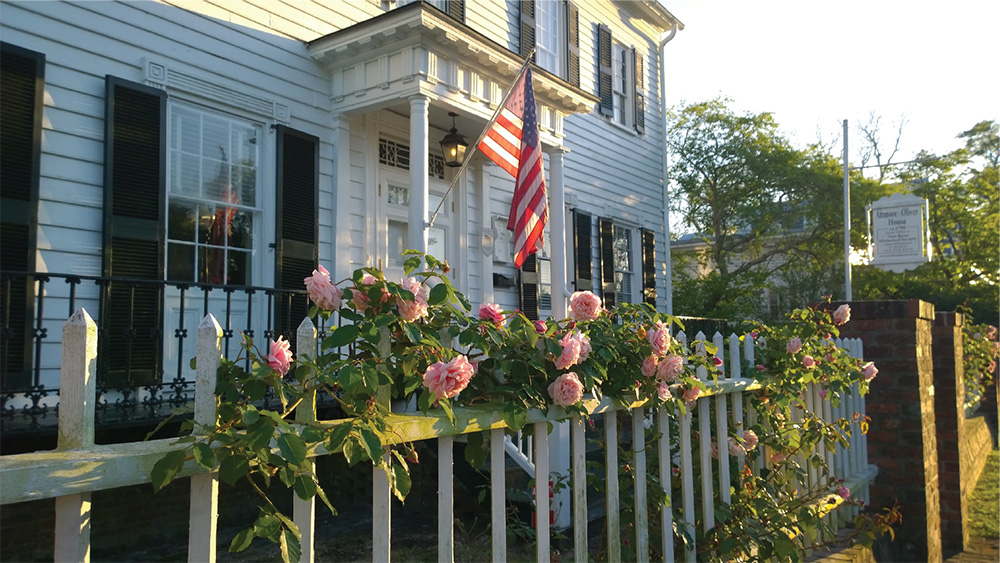Recollections of My Slavery Days
by Claudia Houston, Historian, New Bern Historical Society
"I have lived through the greatest epoch in history, having been born August 10, 1835, at Newbern, North Carolina. That was not so many years, you see, after the adoption of the Declaration of Independence and the winning of the Revolutionary War. But in the country of the Declaration of Independence I was born a slave, for I was a black man. And because I was black it was believed [I] had no soul. I had no rights that anybody was bound to respect. For in the eyes of the law I was but a thing. I was bought and sold. I was whipped. Once I was whipped simply because it was thought I had opened a book."
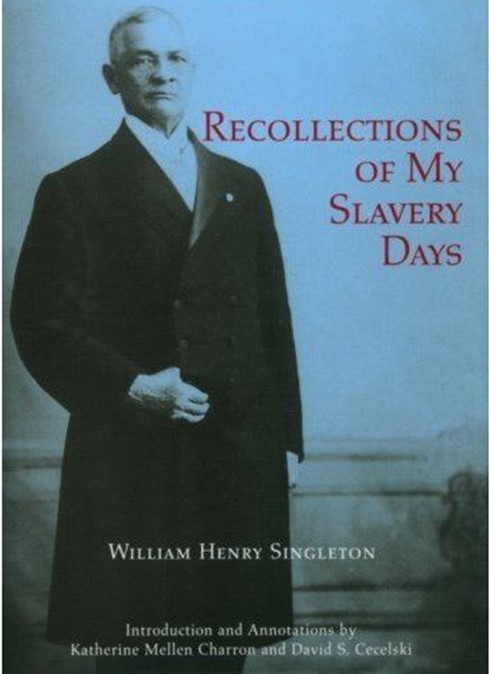 In 1922, at the age of eighty-seven, William Henry Singleton wrote the publication “Recollections of My Slavery Days”. Singleton’s narrative tells an extraordinary story of struggle, resilience, triumph, and freedom.
In 1922, at the age of eighty-seven, William Henry Singleton wrote the publication “Recollections of My Slavery Days”. Singleton’s narrative tells an extraordinary story of struggle, resilience, triumph, and freedom.
Born enslaved in New Bern, William Henry Singleton lived with his mother, Lettice (also spelled Lettis) Nelson, on a large plantation outside of town in Craven County. His father was William G. Singleton, a white clerk in New Bern. William Henry’s existence was a great embarrassment to the white Singleton family; as a result, William Henry’s uncle, the overseer of the plantation, tried numerous ways to sell him. When William was four, he was picked up by a stranger who gave him candy and then took him to a widow in Atlanta who bought young slaves, trained them, and sold them for profit. After being made to sleep on the floor and whipped frequently, young William decided to run away, back to his mother.
The quick-thinking child spotted a woman carrying a bag and hurried over to her, assisting her with her bag and accompanying her to the stagecoach. Presuming William was the woman’s slave, the driver allowed him to board the stagecoach. Though the woman realized he was a runaway she did not reveal it. Young William arrived in Wilmington and then walked ninety-five miles to New Bern, occasionally hitching a ride with a farmer. He then hiked many more miles to the plantation. Although the child’s mother did not immediately recognize him, his older brother did. Lettice finally identified William because of a burn scar on the back of his neck.
While William was explaining his escape from Atlanta to his mother, a slave patrol came to the plantation, and he was quickly hidden under a floorboard in a type of potato cellar. Hidden there for the next three years, his mother secretly fed him and William would look through the cracks in the boards to make sure no one was around. One day the child spotted fresh biscuits cooling on a rail fence outside. Unbeknownst to young William, that was a trick slave catchers used to lure runaways. As he grabbed a biscuit, a horn sounded, and the slave catchers grabbed him. He was sold for $500 to a man in a neighboring county. While he was gathering his things, young Singleton once again ran away and hid out in the woods. He snuck back at night to hide again under the floorboards in his mother’s cellar. The overseer, sure that William was nearby, promised his mother that if William agreed to work on the farm, he would not sell him again.
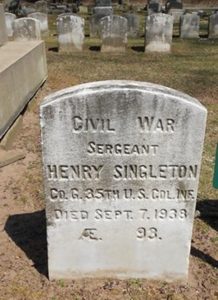
Based on that promise, William came out of hiding but was promptly sold to a poor elderly woman for $50. She was kind, but eventually sold him. Singleton escaped once more and began a life of “hiding in plain sight.” He fled to New Bern and hired out as a bellboy at the Gaston House Hotel for the sum of $3 per week. Whenever anyone asked his name, he responded that he did not know, earning himself the nickname of the “Don’t Know Boy.” When his secret was eventually discovered, William fled back to his mother, who insisted he give himself up to the overseer. Realizing that William was now thirteen years old and able to do a man’s work, the overseer told him to go out to the barn and work and that all would be okay. William worked hard but was whipped with a harness strap for any small infraction. The overseer’s son accused William of opening one of his schoolbooks and, as slaves were not allowed to read or write, he received a severe whipping.
When the Civil War broke out, the overseer’s nephew, Samuel Hyman, enlisted in the 1st North Carolina Cavalry and William volunteered to be his manservant. He watched and became adept at learning drills. During the March 1862 engagement of troops at Wyse Fork in Lenoir County, Singleton escaped for his final time by fleeing to New Bern and the Federal lines, joining 10,000 other escaped slaves.
Singleton then functioned as a guide to Union troops but when his horse was shot out from underneath him, he informed his superior, Colonel Leggett, that he would not participate any longer unless he was armed. After being informed that this would never happen, William asked for his $5 pay and headed to the AME Zion church in New Bern. He set up a recruiting station where he “enlisted” one thousand men who he began to train and drill. “I drilled them with cornstalks for guns,” Singleton related many years later.
Singleton frequently implored General Ambrose Burnside to allow his men to fight. While sympathetic to William’s pleas, Burnside explained that he had no authority to allow this. At one point, Burnside introduced William to President Abraham Lincoln while he was meeting with him in Virginia. Lincoln admired Singleton’s tenacity but explained he could not enlist his fellow recruits as they remained contraband and were not yet American citizens.
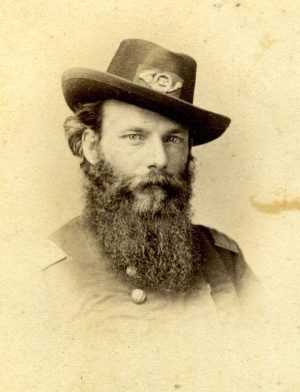
In January of 1863, the Emancipation Proclamation was signed and there was hope that Singleton and his men would be able to join the Army. Finally on May 28, 1863, the 1st North Carolina Colored Volunteers, later redesignated the 35th United States Colored Troops, was officially formed under the command of Colonel James Beecher, half-brother of Harriet Beecher Stowe, author of Uncle Tom’s cabin. Singleton enlisted as First Sergeant of Company G and during the next two years, fought with his unit in South Carolina, Georgia, and Florida. At Olustee, Florida, he was wounded in his right leg.
While in the regiment, Singleton learned the letters of the alphabet and simple words. He mustered out of the Army in Charleston in 1866. He again headed North where he joined the African Methodist Episcopal Church in New Haven Connecticut. He learned to read and became a minister with the AME Zion Church there. He married twice, as his first wife died, and for a time he became an itinerant preacher living in Maine and New York. He eventually returned to New Haven.
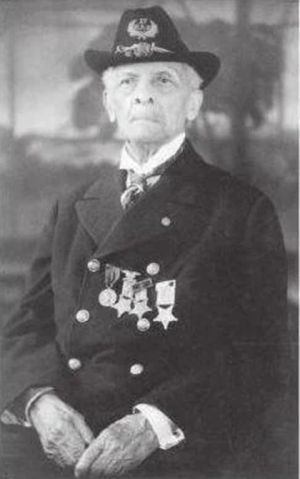 Singleton was active with a local unit of the Grand Army of the Republic. In 1938 at the age of 95, Singleton attended the 72nd GAR national encampment in Des Moines, Iowa. Despite his poor eyesight and weak heart, he marched proudly in a parade for fifteen miles in blistering heat. Hours later he suffered a fatal heart attack and died.
Singleton was active with a local unit of the Grand Army of the Republic. In 1938 at the age of 95, Singleton attended the 72nd GAR national encampment in Des Moines, Iowa. Despite his poor eyesight and weak heart, he marched proudly in a parade for fifteen miles in blistering heat. Hours later he suffered a fatal heart attack and died.
William Henry Singleton died September 7, 1938, as a free man wearing the uniform that he loved. He is buried at Evergreen Cemetery in New Haven, Connecticut.
If you would like to learn more about William Henry Singleton, his compelling and very readable publication “Recollections of my Slavery Days” can be found online by clicking here. There is also a Civil War Trails marker featuring Singleton in front of St. Peter’s Church on Queen Street. The New Bern Historical Society’s free 100th Anniversary exhibit in the Duffy Gallery of the North Carolina History Museum has information regarding William Henry Singleton as well as other notable New Bernians.

